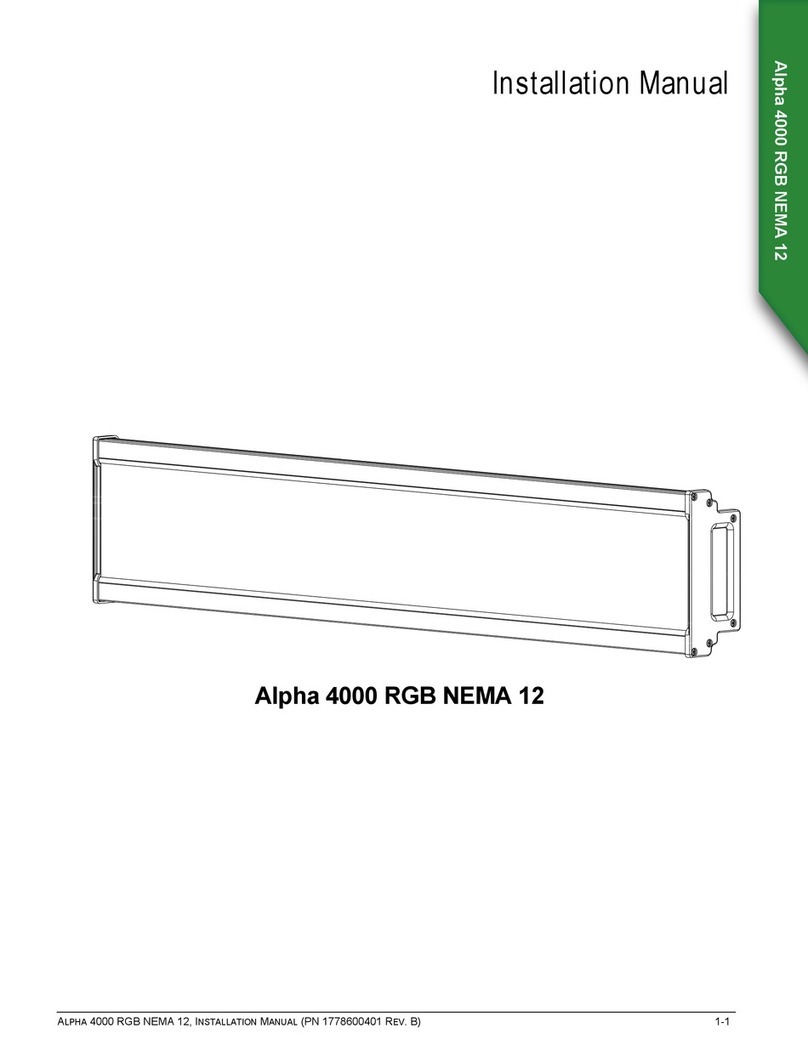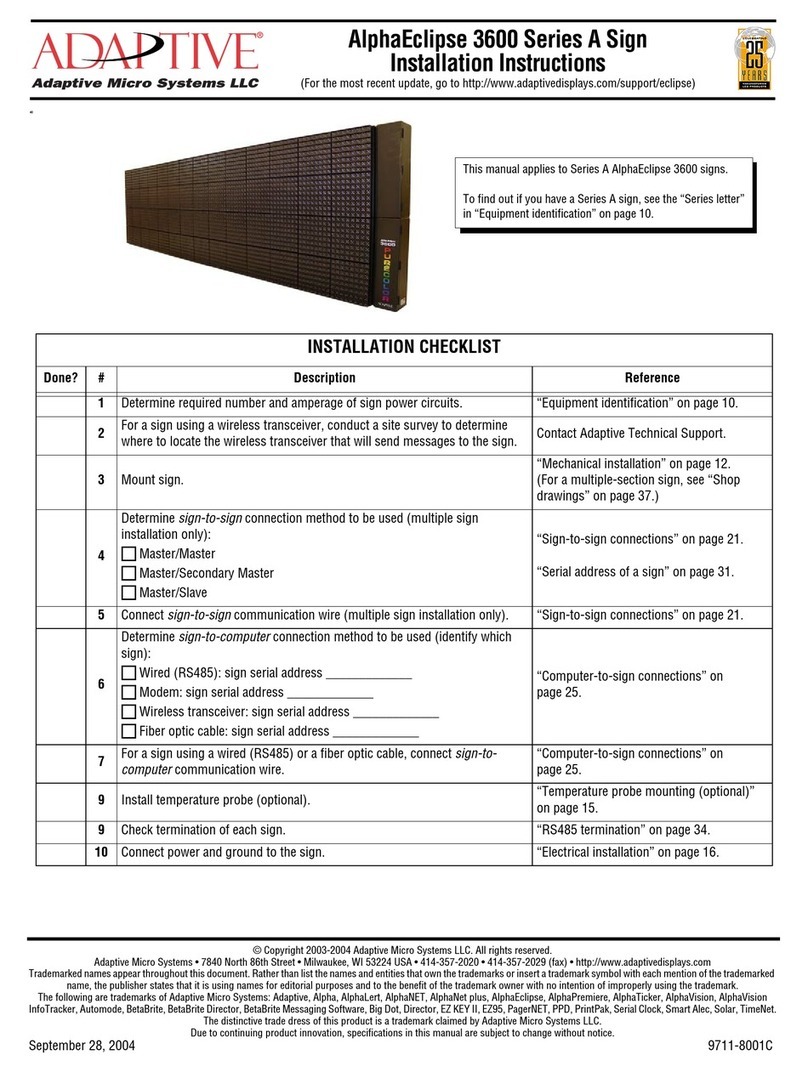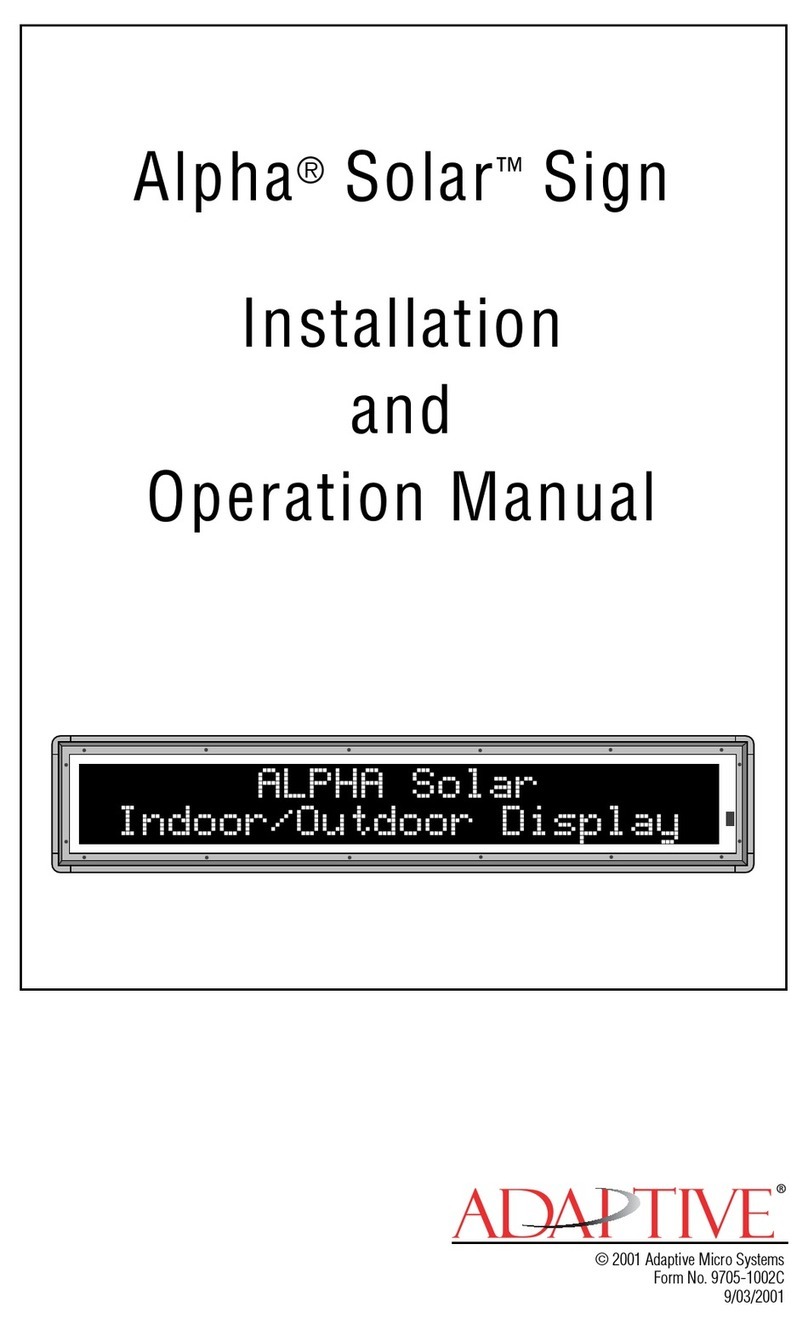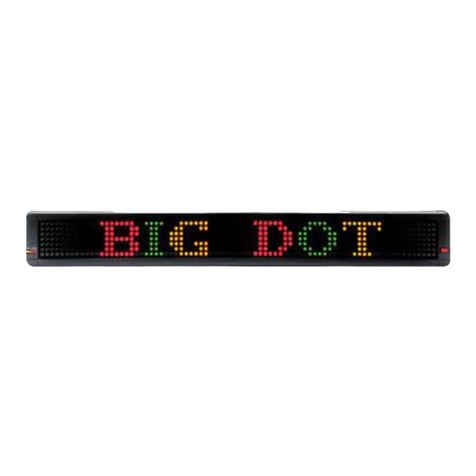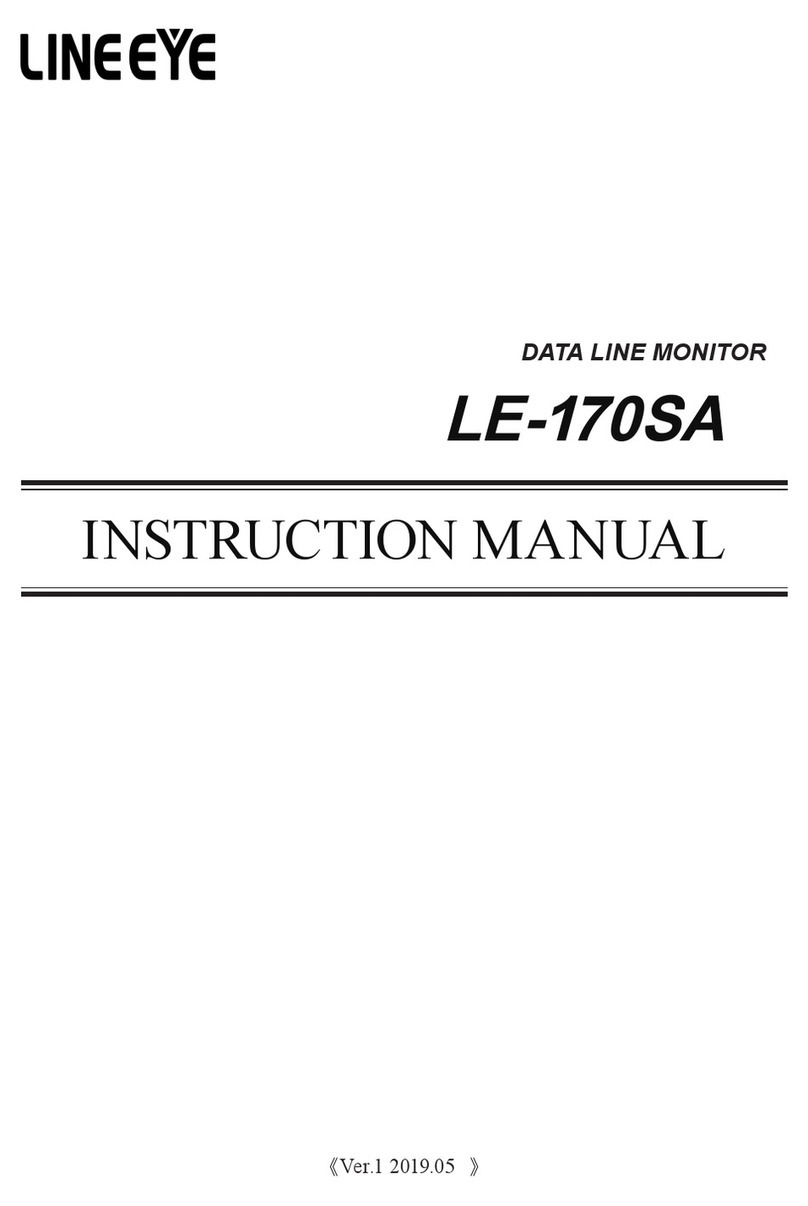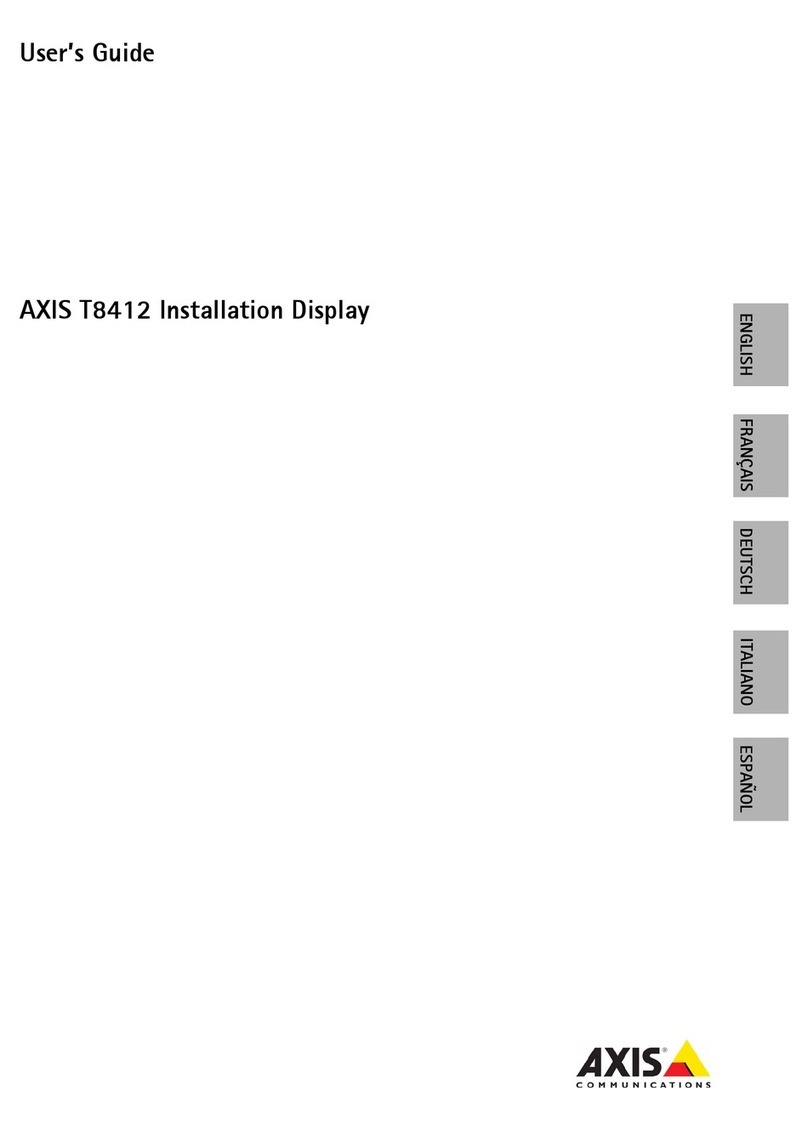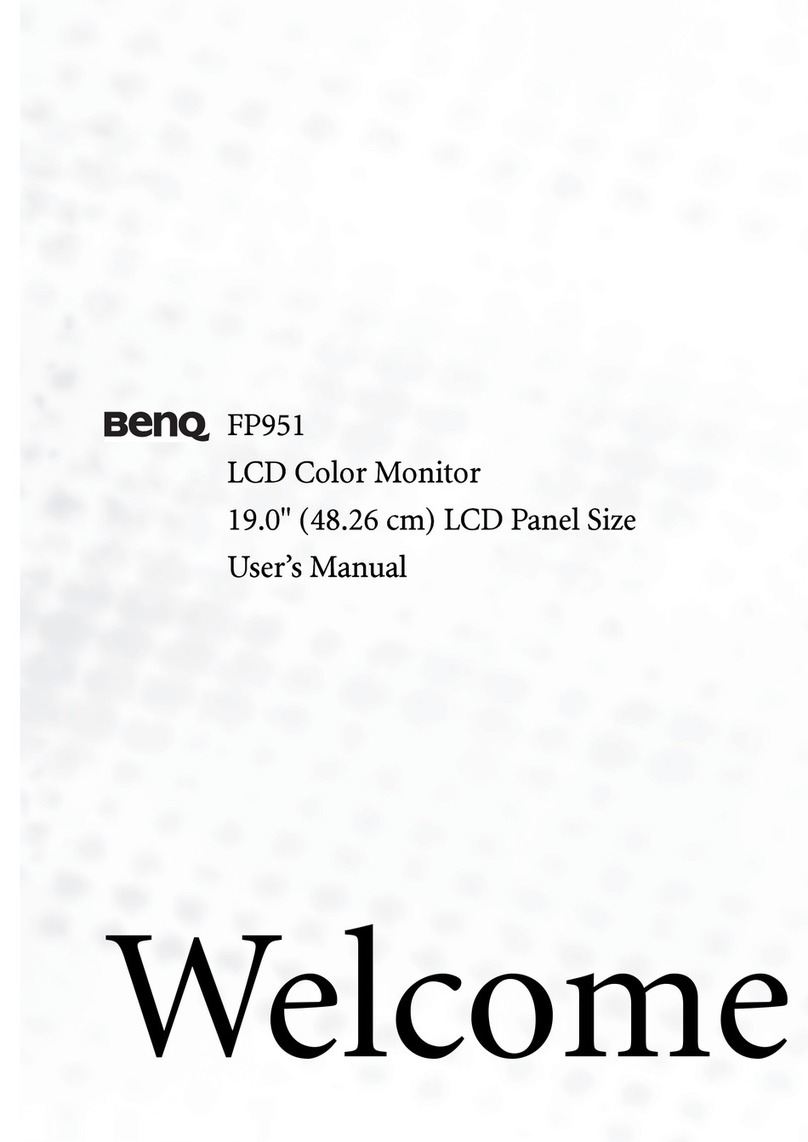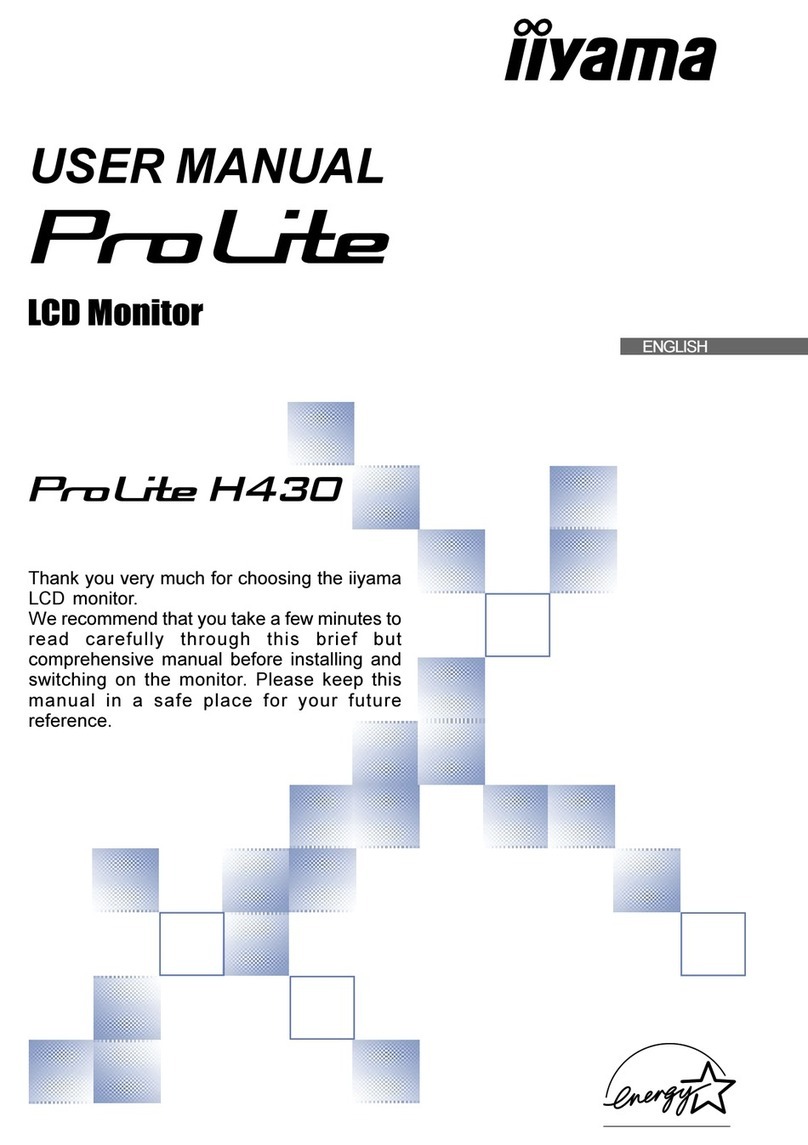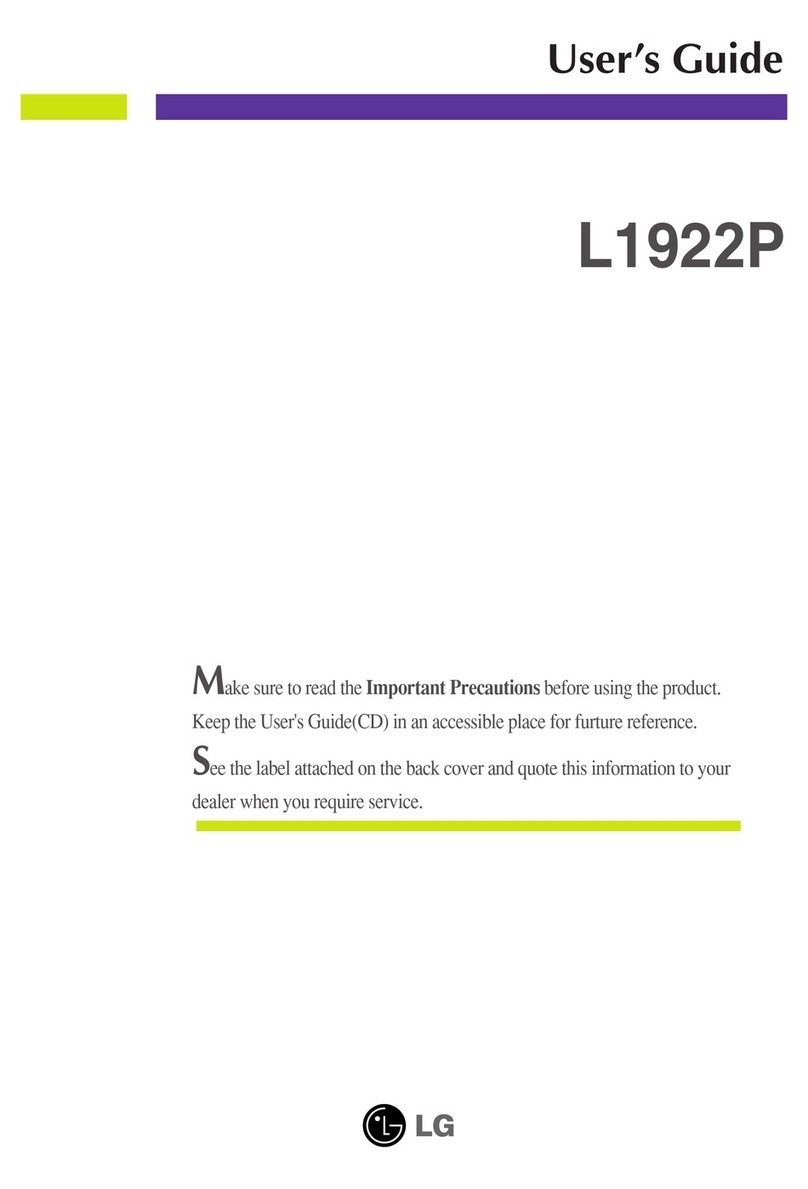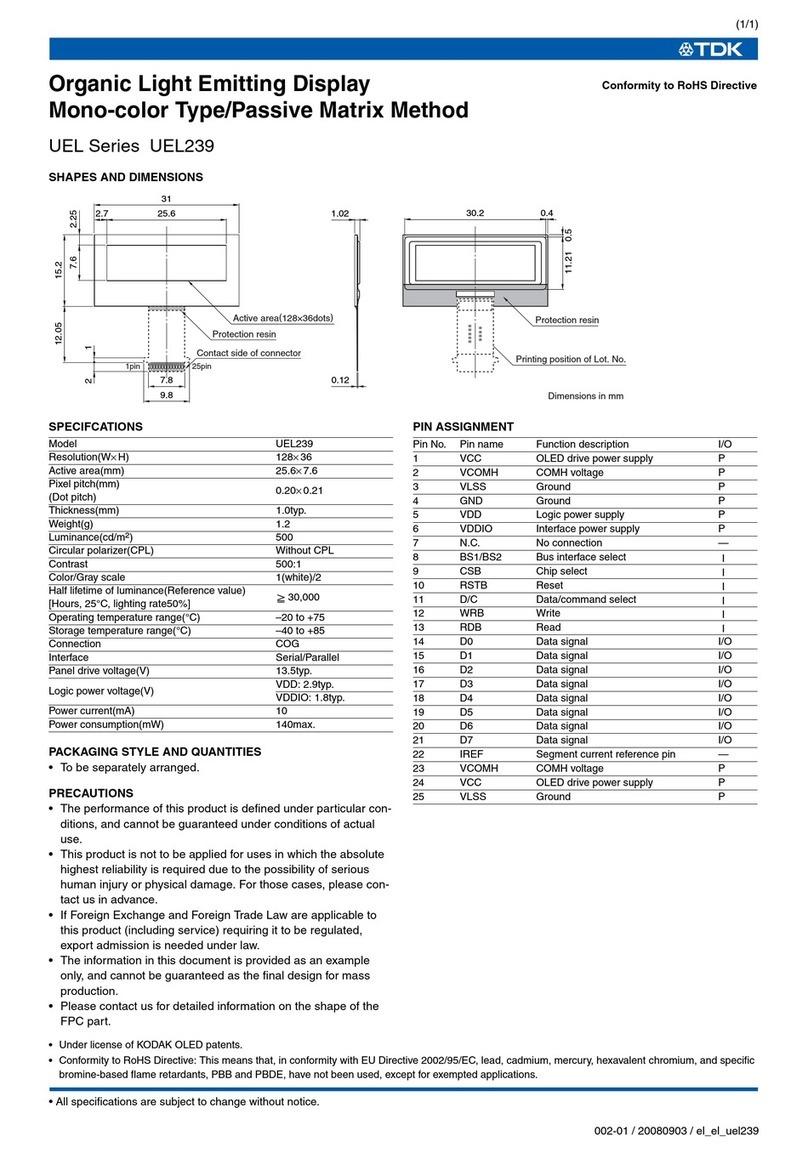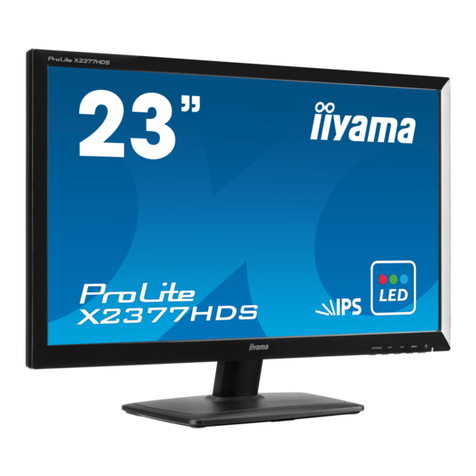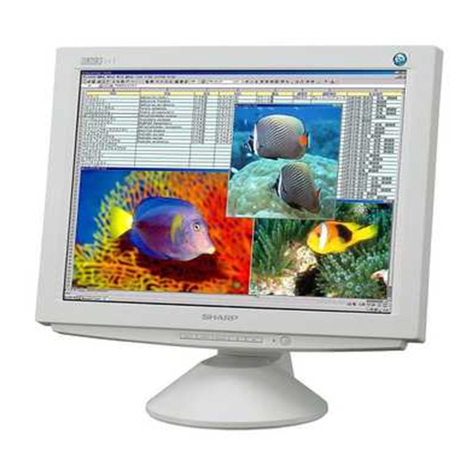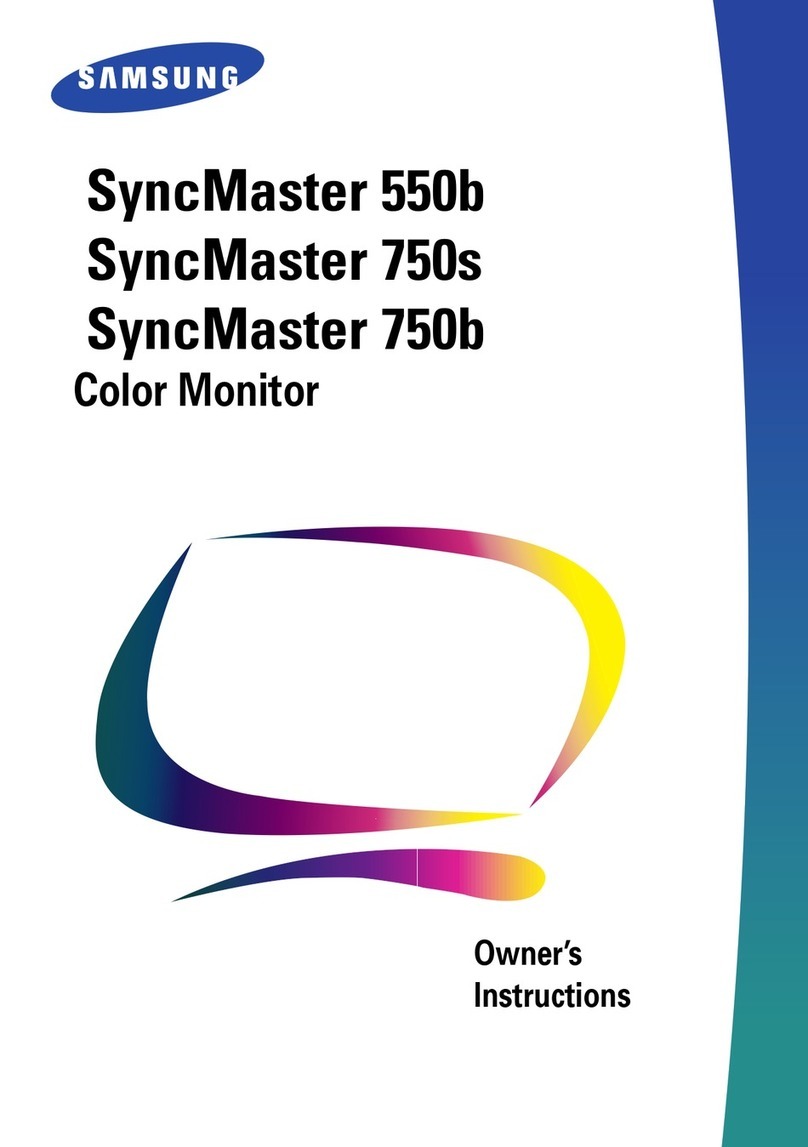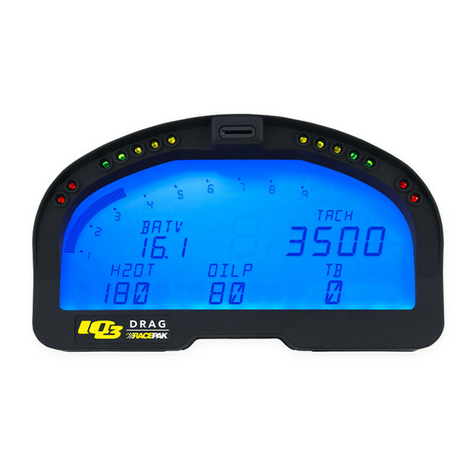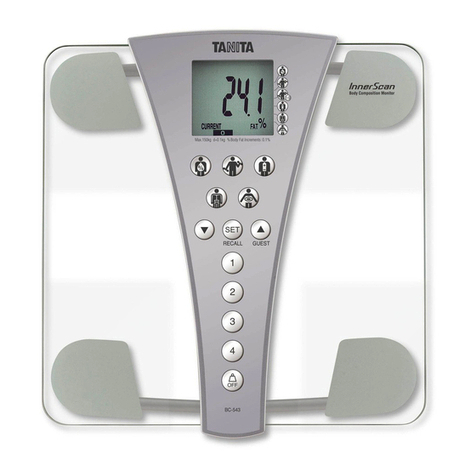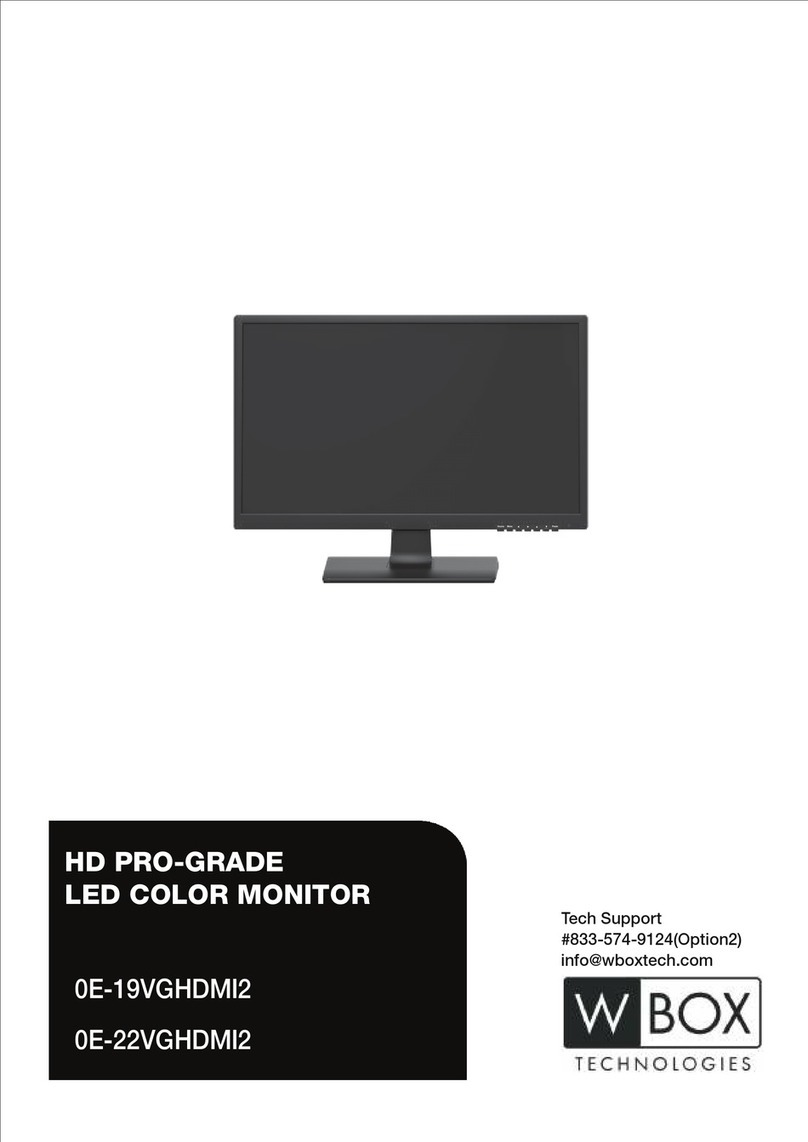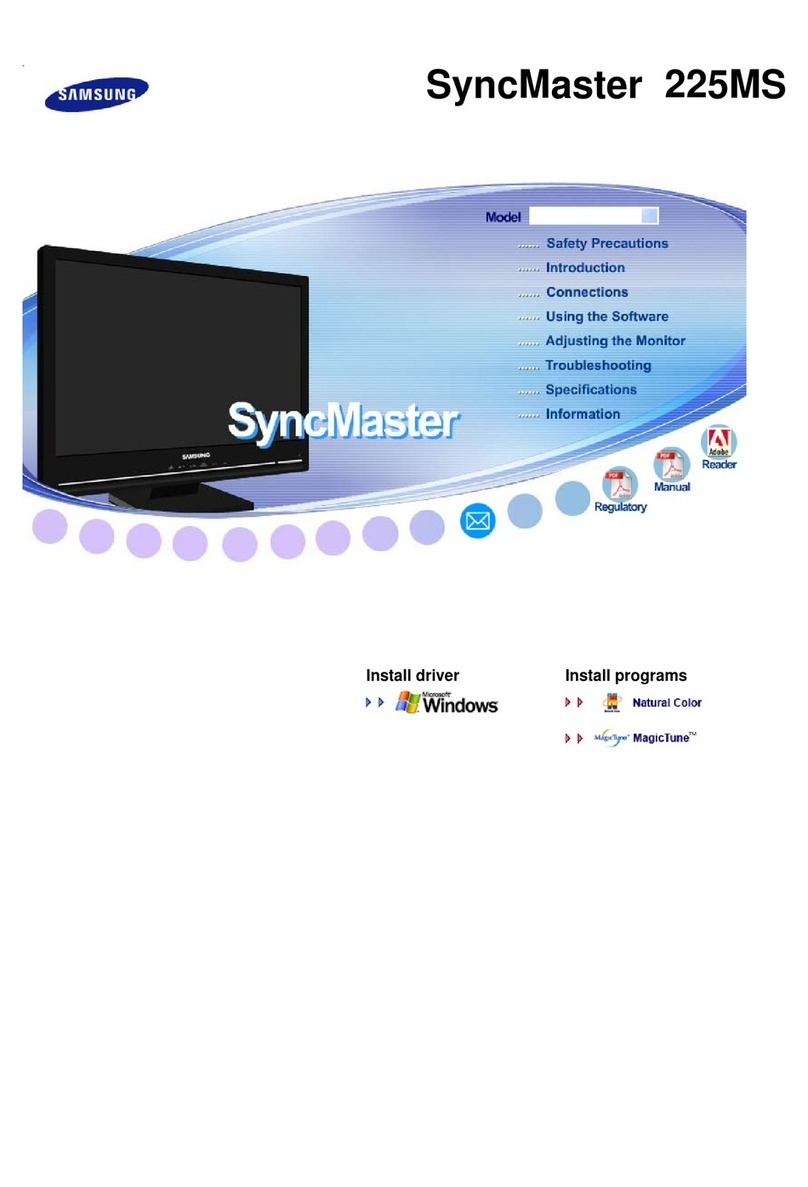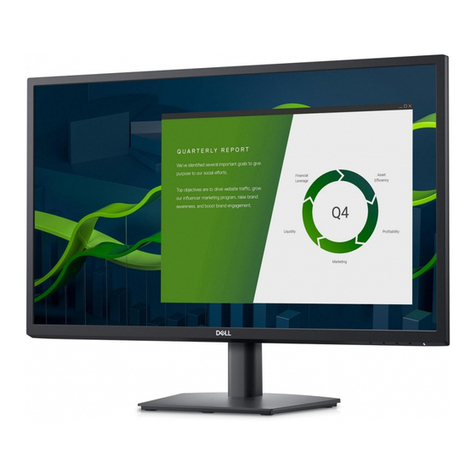Adaptive Micro Systems Alpha User manual

i
ALPHA
™
Personal Priority Display
User Manual
PERSONAL
PRIORITY DISPLAY
© 1997 Adaptive Micro Systems
Form No. 9708-5002
12/10/97

ii
NOTE: Due to continuing product innovation,specifications in
this document are subject to change without notice.
Copyright © 1996 Adaptive Micro Systems, Inc. All rights reserved.
Trademarkednames appearthroughout thisdocument. Rather than list the names and entities
that own the trademarks or insert a trademark symbol with each mention of the trademarked
name, the publisher states that it is using the names for editorial purposes and to the benefit
of the trademark owner with no intention of improperly using the trademark.
BETA-BRITE and BIG DOT are trademarks of Adaptive Micro Systems, Inc. registered in the
United States Patent and Trademark Office.
ALPHA, AlphaNET, AlphaNET
plus
, AlphaNET
plus
II, ALPHAVISION, Automode, EZ KEY II,
EZ95, PowerView, PrintPak, TimeNet, AlphaLert, and SMART ALEC are trademarks of
Adaptive Micro Systems, Inc.
Visit us at our Internet World Wide Web site:

iii
Contents
Warranty..........................................................................................................iv
How to obtain warranty service..........................................................................iv
Return Merchandise Authorization (RMA) form ............................................... v
Description and installation .............................................................................1
Personal Priority Display description...................................................................1
Personal Priority Display technical specifications...............................................2
EMI compliance....................................................................................................2
Remote Control keyboard description (optional)..................................................3
Basic sign operation.........................................................................................4
Turning the sign on and off..................................................................................4
Setting the sign’s time and date..........................................................................5
Setting the sign’s serial address..........................................................................7
Clearing the sign’s memory.................................................................................8
Connecting a sign to a personal computer.......................................................9

iv
Warranty
AdaptiveMicroSystems,Inc.warrants to theoriginal purchaserthat
the sign, keyboard and power supply will be free of defects in
workmanship and materials for a period of one year from the date of
purchase.
Adaptive Micro Systems, Inc. will without charge, repair or replace,
atits option, defective product or component parts upon deliveryto the
factory service department accompanied by proof of the date of
purchase in the form of a sales receipt.
This warranty does not apply in the event of any misuse or abuse of
the product, or as a result of any unauthorized repairs or alterations.
This warranty does not apply if the serial number is altered, defaced or
removed from the sign. Incandescent lamps used in incandescent
products are not covered by this warranty.
The purchase price of this product does not include, from Adaptive
Micro Systems, Inc., any on-site support, service or maintenance.
Local ordinances prohibiting the use of flashing signs may exist in
some locations. Compliance with local ordinances is the sole
responsibility of the customer.
To obtain warrantycoverage,this productmustberegistered.Please
completetheenclosedwarrantyregistrationcardandmail ittoAdaptive
Micro Systems, Inc.
How to obtain warranty service
1. Contact the dealer/distributor from whom the sign was purchased.
If you do not know where the product was purchased, contact
Adaptive Micro Systems Customer Service at 414-357-2020.
2. Ifthe dealer/distributorcannot servicethe product,obtain a Return
Merchandise Authorization (RMA) number through that company.
An RMA number is required to obtain warranty service.
3. Fill out the Return Merchandise Authorization (RMA) Form on the
following page.To obtain warranty service, this form including the
RMA number must accompany the product.
4. Follow return instructions on the RMA form to return to Adaptive
Micro Systems, Inc.

v
Return MerchandiseAuthorization (RMA) form
RMA Number:__________________________
Date of Purchase:_________________________________
Company Name: _________________________________
Contact Person: _________________________________
Address: _________________________________
_________________________________
Phone Number: _________________________________
Description of Problem:_____________________________
_____________________________________________
_____________________________________________
_____________________________________________
_____________________________________________
Return Instructions:
Step 1: Obtain an RMA number from your dealer/distributor.
Step 2: Fill out this form and include proof of purchase receipt if product is under warranty.
Step 3: Pack this form, the sign,keyboard and transformer in the original carton (or a suitable
replacement).Please write the RMA number on the outside of the package.Any damage to
the product during shipment is the responsibility of the freight company or the owner of the
sign.
Step 4: Ship the package,
postage/shipping prepaid
to:
Adaptive Micro Systems,Inc.
Attn:RMA No. ___________
7840 North 86th Street
Milwaukee,WI 53224
PLEASEWRITE THE RMA NUMBER ONTHE LABEL OFTHE SHIPPING BOX -THANKYOU.

vi

Personal Priority Display
Description and installation: 1
Description and installation
NOTE: The Personal Priority Display is for indoor use only, has no
customer serviceable parts, and should not be continuously exposed
to direct sunlight.
Item Name Description
A
Programming buttons Used to set the display’s date, time, and serial address; to clear the
display’s memory; and to turn the display off and on.
B
Infrared (IR) receiver window When the Remote Control keyboard (part number 1072-1111) is pointed
atthis window, theRemote Control can beused to typein messages and
to program the sign’s operation.
C
Mounting bracket Used either to suspend or to hold the display upright. (The brackets and
screwsareincluded.)Makesurethemountinghardwareusedtohangthe
display can support at least 4 times the weight of the display.
D
RS232/RS485 jack See “Connecting a sign to a personal computer” on page 9.
NOTE: This jack is not a phone connector.
E
Wall mounting holes Used to hang the display to screws in a wall. Use #8 screws that can
support at least 4 times the weight of the display. (These screws are not
supplied.) Space the screws 4" apart and at least 1/4" from the wall.
F
Power supply connection Connects to the power supply that came with the display.
NOTE: Make sure that the correct power supply is used. Otherwise, the
display may not function and could be damaged.
A
DCCE
BC
Newstyle(top)and
old style (bottom)
mounting bracket
positions.
Figure 1: Personal Priority Display (front, side,and back views).
4"
(10.2 cm)
9 3/8" (23.8 cm)
F
Make sure that the correct
power supply is used with
the display.Otherwise, the
display may not function
and could be damaged.

Personal Priority Display
2 Description and installation: Personal Priority Display technical specifications
Personal Priority Display technical specifications
EMI compliance
While this device is a verified Class A device, it has been shown to meet the
Class B limits.
This equipment has been tested and found to comply with the limits for a
Class A digital device, pursuant to Part 15 of the FCC Rules. These limits are
designed to provide reasonable protection against harmful interference when the
equipment is operated in a commercial environment. This equipment generates,
uses, and can radiate radio frequency energy and, if not installed and used in
accordance with the instruction manual, may cause harmful interference to radio
communications. Operation of this equipment in a residential area is likely to
cause harmful interference in which case the user will be required to correct the
interference at his own expense.
Changes or modifications made to the Personal Priority Display that have
not been expressly approved by Adaptive Micro Systems, Inc. could void your
authority to operate the Personal Priority Display.
Item Description
Weight: Display: 1 lb 5 oz (595.35 grams)
Power supply: 1 lb 3 oz (538.65 grams)
Height: 3.5 in (8.89 cm)
Length: 13.7 in (34.80 cm)
Depth: 1.84 in (4.67 cm)
Input voltage: 9.0 VDC, 1.5 amp
Power supply: 120 VAC 60 Hz or 230 VAC 50 Hz
Environmental requirements:
ThePersonalPriorityDisplayisforindooruseonly.Thedisplay
shouldbe operated in anenvironment where the temperature
is between 0 - 50
°
C, and the humidity (non-condensing)
does not exceed 95%.

Personal Priority Display
Description and installation: Remote Control keyboard description (optional) 3
Remote Control keyboard description (optional)
YZ
STUVW
X
MNPQ
R
O
GHIJKL
ABCDEF
123456
7890
AUTO SPEED TIME DOT
ROLL WIPE SCROLL FLASH HOLD ROTATE
APPEND CURSOR SPECIAL FONT WIDTH COLOR
ON - OFF
REMOTE CONTROL
SOUND
INSERT BACK ADV DELETE
#
¢
$%& *
<>
=/+-
;:”’ ,.
?!
PROGRAM RUN
SELECT
SPACE RETURN
SHIFT CAPS SHIFT
Figure 2:Infrared (IR) Remote Control keyboard.
Use one of the SHIFT
keys to access these
white functions (like
ROLL and TIME) . . .
... and these white
characters (like # and !).
Press PROGRAM
to put the sign into
programming
mode.(This mode
is used to set the
dateand time,type
in messages,etc.)
Press RUN twice to exit
programming mode.
To turn the sign
off or on,hold
down SHIFT and
then press
PROGRAM.
Point this end of the Remote Control at a sign.The
Remote Control should be from 5 to 30 feet from a sign.

Personal Priority Display
4 Basic sign operation: Turning the sign on and off
Basic sign operation
Turning the sign on and off
When you plug in the sign’s power supply, the sign starts up automatically,
and unplugging the power supply turns the sign off.
However, instead of unplugging a sign, there are two others ways to turn a
sign off:
Holding down
SHIFT
and then pressing
PROGRAM
on a Remote Control turns a
sign off and on.
Using the and keys also turns a sign off and on
NOTE: Messages that you have programmed into the sign will
not
be lost
when you turn a sign off. Messages will be retained for up to 10
days if the sign is not powered.
When you do this... You see this...
and at the same time
Press 5 times.
Press to turn the sign off.
To turn the sign back on, press .
BUTTON MENU
RESUME (A)
Turn Unit Off (A)
Turn Back On (B)

Personal Priority Display
Basic sign operation: Setting the sign’s time and date 5
Setting the sign’s time and date
You can set the date and time by using either the Remote Control or the
and keys:
Using the and keys to set the time and date
When you do this... You see this...
and at the same time
Press .
Press .
The
day
will be in wide type. Press to change
the day (or to select the hour).
The
hour
will be in wide type. Press to change
the hour (or to select the minute).
The
minute
will be in wide type. Press to
change the hour (or to select 12 or 24-hour
mode).
AM
/
PM
or
24 Hr
will be in wide type. Press to
change from 12 to 24-hour mode.
Press for
Next
.
Press .
BUTTON MENU
RESUME (A)
SET TIME AND DAY (A)
MON 12:27 AM
A Next, B Change
MON 12:27 AM
A Next, B Change
MON 12:27 AM
A Next, B Change
MON 12:27 AM
A Next, B Change
MON 12:27 AM
A Next, B Change
MON 12:27 AM
SET TIME AND DAY (A)
MON 12:27 AM
SET DATE(A)
AUG 23,1996

Personal Priority Display
6 Basic sign operation: Setting the sign’s time and date
Press .
The
month
willbeinwidetype.Press tochange
the month (or to select the day).
The
day
will be in wide type. Press to change
the day (or to select the year).
Press for
Next
.
and at the same time
Press to resume normal sign operation.
A Next, B Change
AUG. 23,1996
A Next, B Change
AUG. 23,1996
A Next, B Change
AUG. 23,1996
SET DATE(A)
AUG 23,1996
BUTTON MENU
RESUME (A)

Personal Priority Display
Basic sign operation: Setting the sign’s serial address 7
Setting the sign’s serial address
The serial address is a number from 0 to 99 assigned to a sign. This number
permits you to send messages to an individual sign in a network of signs.
Ordinarily, messages are broadcast to all signs on a network, but when you give a
sign a unique address, messages can be directed to specific signs.
See the document
Network Configurations
(part number 9708-8046) for
more detailed information.
You can set the serial address by using either the Remote Control or the
and keys:
Using the and keys to set a serial address
When you do this... You see this...
and at the same time
Press until SET SERIAL (A) appears.
Press .
Press to change thefirstdigit(or toselect
the second digit).
Press to change the second digit.
Press for
Next
.
and at the same time
Press to resume normal sign operation.
BUTTON MENU
RESUME (A)
SET SERIAL (A)
00
A Next, B Change
00
A Next, B Change
00
A Next, B Change
00
SET SERIAL (A)
00
BUTTON MENU
RESUME (A)

Personal Priority Display
8 Basic sign operation: Clearing the sign’s memory
Clearing the sign’s memory
You can clear the sign’s memory by using either the Remote Control or the
and keys:
NOTE: Clearing the sign’s memory erases all the messages that have been
programmed into the sign.
Using the and keys to clear the sign’s memory
When you do this... You see this...
and at the same time
Press until CLEAR MEMORY (A) appears.
Press . then
Press to clear the sign’s memory. The sign will return to normal operation.
BUTTON MENU
RESUME (A)
CLEAR MEMORY (A)
WARNING!
*******
CLEAR?
A=YES B=NO

Personal Priority Display
Connecting a sign to a personal computer: 9
Connecting a sign to a personal computer
Messages can be sent to a sign using a Remote Control or a personal
computer running the appropriate messaging software (see below).
For further connection options, see the document
Network Configurations
(part number 9708-8046).
Item Part # Description
A
—
Ferrite (ferrite end towards sign)
NOTE: A ferrite must be used in order for the Personal Priority Display to comply
with Class B EMI requirements.
B
1088-8625 25-foot 6-conductor RS232 data cable
1088-8627 50-foot 6-conductor RS232 data cable
C
4370-0001C 25 pin sub-D/to 6 pos. RJ11 adapter
1088-9108 9 pin sub-D/to 6 pos. RJ11 adapter
ABC
Personal Priority Display
To one of the
PC’s COM
(RS232) ports
To the sign’s
RS232/RS485 jack PC running
AlphaNET
plus
software

Personal Priority Display
10 Connectingasign to apersonalcomputer:
Other manuals for Alpha
2
Table of contents
Other Adaptive Micro Systems Monitor manuals
